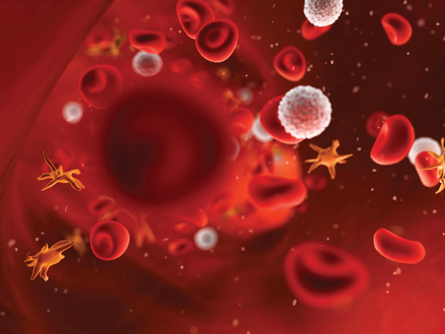Module 8 Intro
1. Module 8 Intro
1.17. Page 2
Module 8—Circulation, Immunity, and Excretion
 Explore
Explore
 Read
Read
connective tissue: the material between the cells of the body that gives tissues form and strength
This tissue is also involved in delivering nutrients.
undifferentiated cells: cells that have not yet reached the stage where specific biological roles are formed
These cells show no visible separation into their different structural parts
stem cells: undifferentiated cells that can theoretically divide without limit to replenish other cells
When a stem cell divides, each new cell has the potential to either remain a stem cell or become another type of cell with a more specialized function. This can be, for example, a muscle cell, a red blood cell, or a brain cell.
Blood is often referred to as a connective tissue. Its chief function is to connect blood cells with other tissues and body organs. It helps maintain homeostasis in a number of areas including water, nutrients, gas, hormones, and waste balance. Despite the fact blood appears to be uniform in its consistency, it is really made up of a solid, or formed, portion and a fluid portion.
The formed portion of the blood contains the cellular elements of
-
erythrocytes (red blood cells)
-
leucocytes (white blood cells)
-
platelets
These elements make up the formed portion of blood and are called this because these blood components are formed in the bone marrow from generic, undifferentiated cells—more commonly known as stem cells. These stem cells are capable of specializing and becoming any one of the three types of formed blood constituents.

© Sebastian Kaulitzki/iStockphoto
The following diagram illustrates the differentiation of blood cells.

microlitre: one millimetre cubed
hemoglobin: a protein that makes up the majority of the contents of a red blood cell
A human hemoglobin molecule contains four protein subunits attached to a heme group. One iron molecule, at the core of the heme group, binds one oxygen molecule. This ability to bind oxygen is essential in oxygen transport.
dissociates: to separate reversibly into smaller components
The fluid portion of the blood is the plasma that consists primarily of water (92%). The other 8% of the plasma contains
-
dissolved carbon dioxide
-
proteins (fibrinogen, albumin, globulin)
-
carbohydrates
-
phosphates
-
calcium, chlorine, potassium, and other minerals
-
vitamins
-
hormones
-
waste products like urea